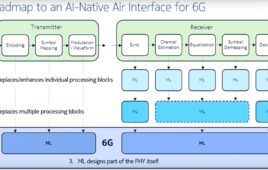Concerns about public weapons safety and has been a rising concern in the United States in recent years. With the rash of shootings and other terroristic attacks that occurred along with threats from gangs, drugs, and terrorism, the need to approach procedures on preventing more of these incidents from occurring is becoming a dire imminent need.
One city that’s taking initiative on this front is Orlando where eight months ago, a mass shooting occurred at Pulse Nightclub that killed 49 people and injured 56. Patriot One Technologies, a Canadian-based technological research company, is collaborating with VGroup Concept, a management company of several Orlando-based restaurants, bars, and nightclubs, to launch what they describe as a “safe districts” initiative. The goal of this joint operation is to deploy radar-based detection technology in public locations like schools, sporting arenas, and nightclubs to detect firearms or other dangerous weapons someone might have concealed on them. Due to limitations on security manpower, surveillance, and detection resources, these public venues are deemed “soft targets”, making them ideal locations to orchestrate a shooting or other mass-casualty attacks.
“Our number one goal at Patriot One is to offer a solution that works with today’s security professionals to help deter, detect, and defend against active threats of violence on innocent citizens everywhere,” says Patriot One Technologies CEO Martin Cronin. “Our equipment can be deployed covertly and has a very small space profile; it can be behind a wall. It allows you to push your security parameter way out, beyond the point people are expected to be searched.”
Looking to address these vulnerabilities and flaws in the current system, Patriot One Technologies hopes to install its NForce CMR 1000 detection system in hallways and doorways at public venues (like the ones mentioned above) managed by VGroup Concept. The NForce CMR 1000 utilizes microwave radar technology to scope out concealed weapons by detecting the metals that compose these gadgets and devices. Any metallic content detected is sent to a database, where it’s analyzed against the metallic components of weapons like firearms, knives, and suicide vests. If a positive match with a threatening weapon or device is found, the venue’s security is alerted and moves toward the suspect.
Moving 642 miles west to New Orleans, the city’s safety officials are toying with a similar tactic of discretely screening people for concealed weapons using infrared thermal imaging. Since infrared uses heat signatures to form images, this technology could make out the shape of a firearm on someone’s person, even through layers of clothing. Since the imaging of shapes are determined by the contrast of temperatures given off by different heat signatures, a concealed weapon could hypothetically be detected on someone when the temperature of the metals it’s composed of stand out in contrast to the temperature of the heat signatures the person with the concealed weapon gives off.
Thermal imaging technology in New Orleans is primarily aimed at being used in the city’s French Quarter, where high numbers of handguns and other concealable weapons are in circulation. While some groups like the ACLU argue that using infrared thermal imagers to detect concealed firearms violates people’s constitutional rights (based on the presumption that anyone carrying a concealed weapon is going to use it with malicious intentions), some law enforcement officials argue that this method would be a more convenient way to scourge the crowds for dangerous concealed weapons in this often crowded part of New Orleans.
“It would be more in character and less intrusive than a metal detector…” says Bob Simms, chairman of the French Quarter Taskforce. “We really need to find the guns. We have way too many guns in the French Quarter.”
Thermal imaging technology isn’t unfamiliar to law enforcement and other emergency services, who have utilized these gadgets and devices for years. Firemen use thermal imagers on rescue missions to find survivors and trapped victims in fires and disaster zones. Police have used thermal technology to find suspects hiding in darkened areas like thickly wooded areas, and detecting objects hidden in or behind walls like money, weapons, and drugs.




